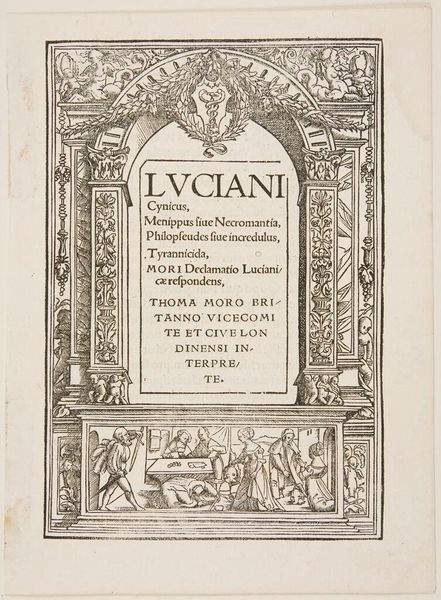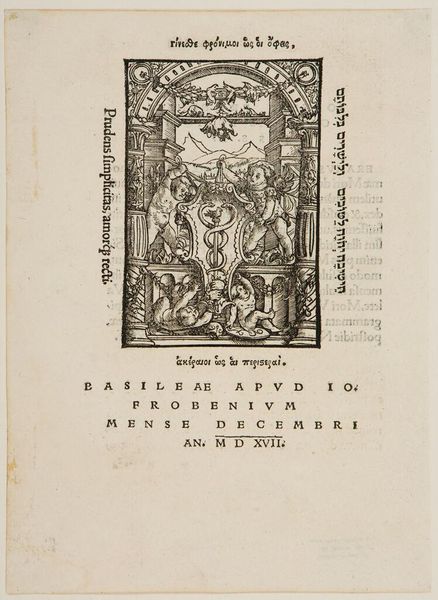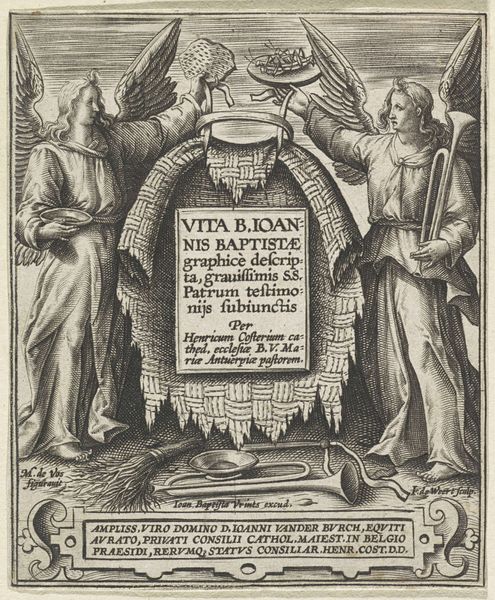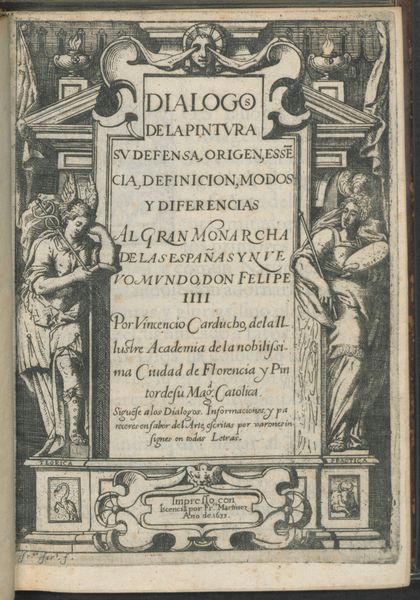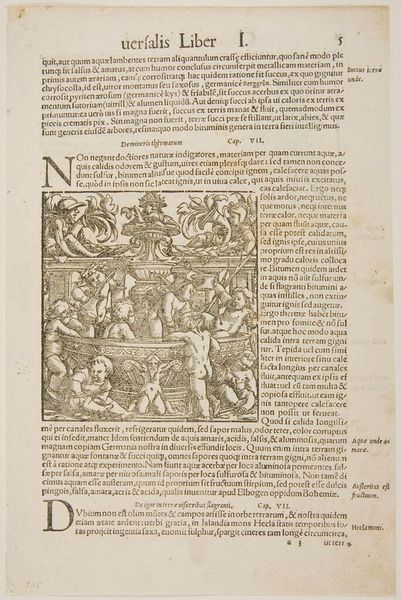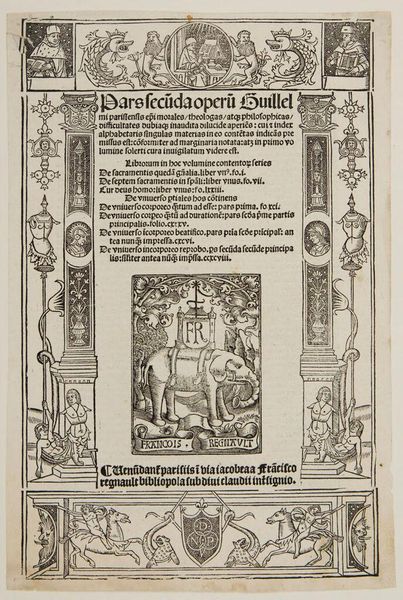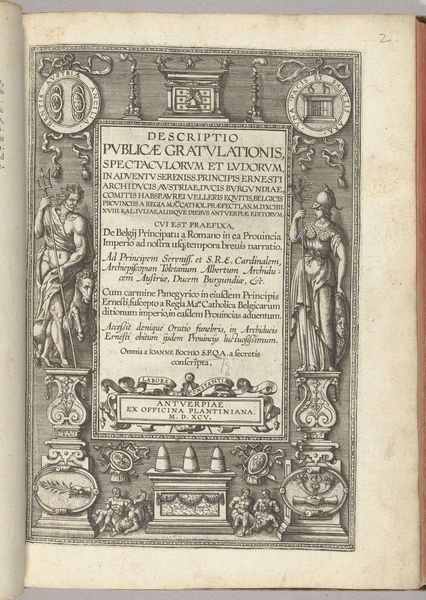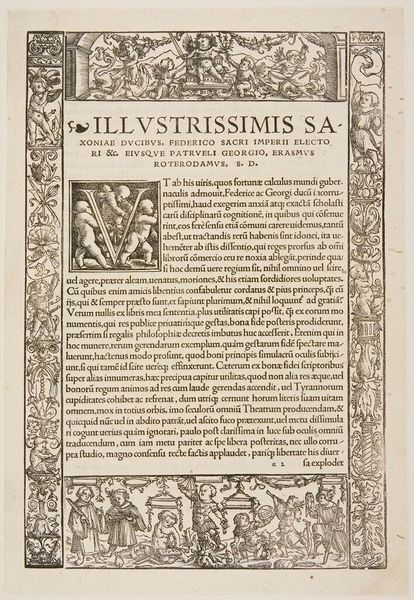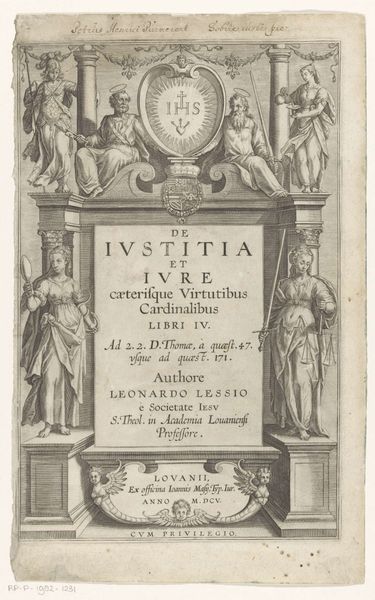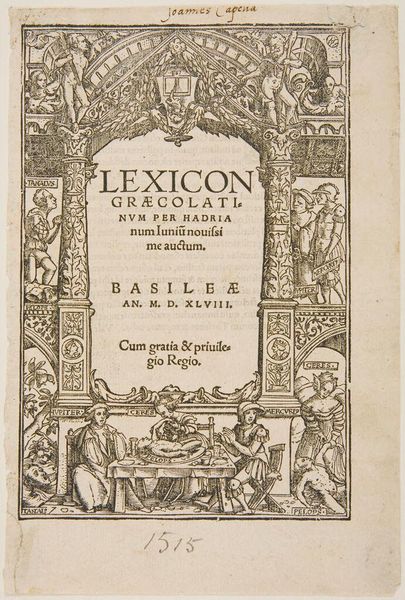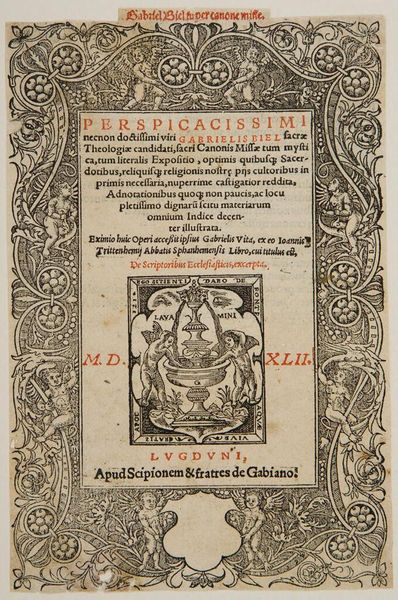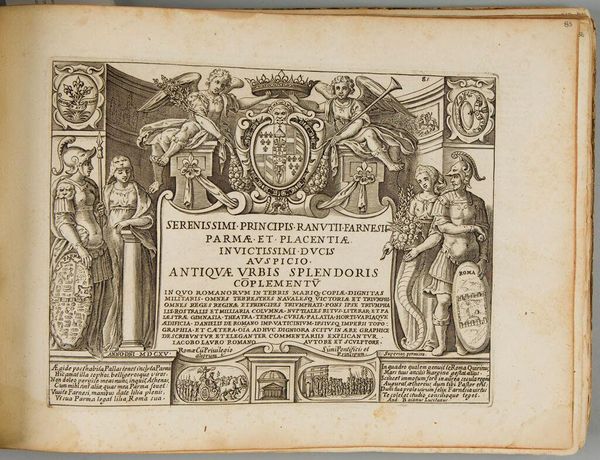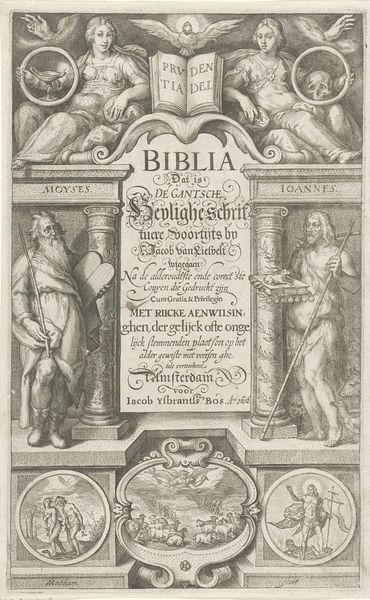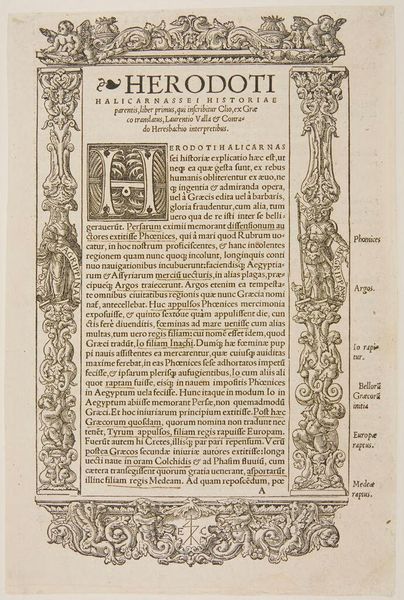
Copyright: CC0 1.0
Curator: Holbein's "Border with the Death of Crassus" is a potent example of how historical narratives can be reshaped through art. The woodcut aesthetic lends itself to stark contrasts, doesn’t it? Editor: It does, it’s like a snapshot of a brutal scene, yet it’s framed by such ornate details. What's your interpretation of this piece? Curator: The death of Crassus wasn’t just a historical event; it became a symbol of greed and Roman hubris. Holbein, working in a time of religious and social upheaval, might be using Crassus's demise to comment on contemporary power structures. The opulence surrounding a violent death is a stark contrast, isn’t it? Almost satirical. Editor: So, you’re suggesting the artist is using a historical event to make a statement about his own time? That's fascinating. Thanks for sharing. Curator: Absolutely! Holbein masterfully blends historical narrative with social commentary. It encourages us to question who holds power and at what cost.
Comments
No comments
Be the first to comment and join the conversation on the ultimate creative platform.
